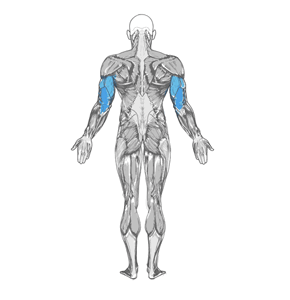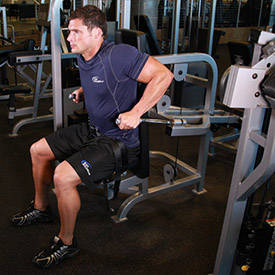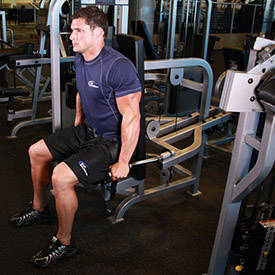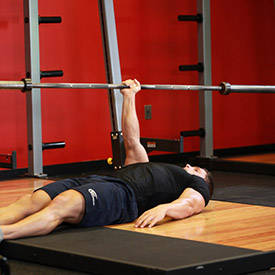Reverse-grip bench press Images


Reverse-grip bench press Instructions

- Lie back on a flat bench. Using a close, supinated grip (around shoulder width), lift the bar from the rack and hold it straight over you with your arms locked extended in front of you and perpendicular to the floor. This will be your starting position.
- As you breathe in, come down slowly until you feel the bar on your middle chest. Tip: Make sure that as opposed to a regular bench press, you keep the elbows close to the torso at all times in order to maximize triceps involvement.
- After a second pause, bring the bar back to the starting position as you breathe out and push the bar using your triceps muscles. Lock your arms in the contracted position, hold for a second and then start coming down slowly again. Tip: It should take at least twice as long to go down than to come up.
- Repeat the movement for the prescribed amount of repetitions.
- When you are done, place the bar back in the rack.
Caution: If you are new at this exercise, it is advised that you use a spotter. If no spotter is available, then be conservative with the amount of weight used. Also, beware of letting the bar drift too far forward. You want the bar to fall around the area between the sternum and upper abs.
Variation: This exercise can also be performed with an e-z bar using the inner handle as well as dumbbells.





